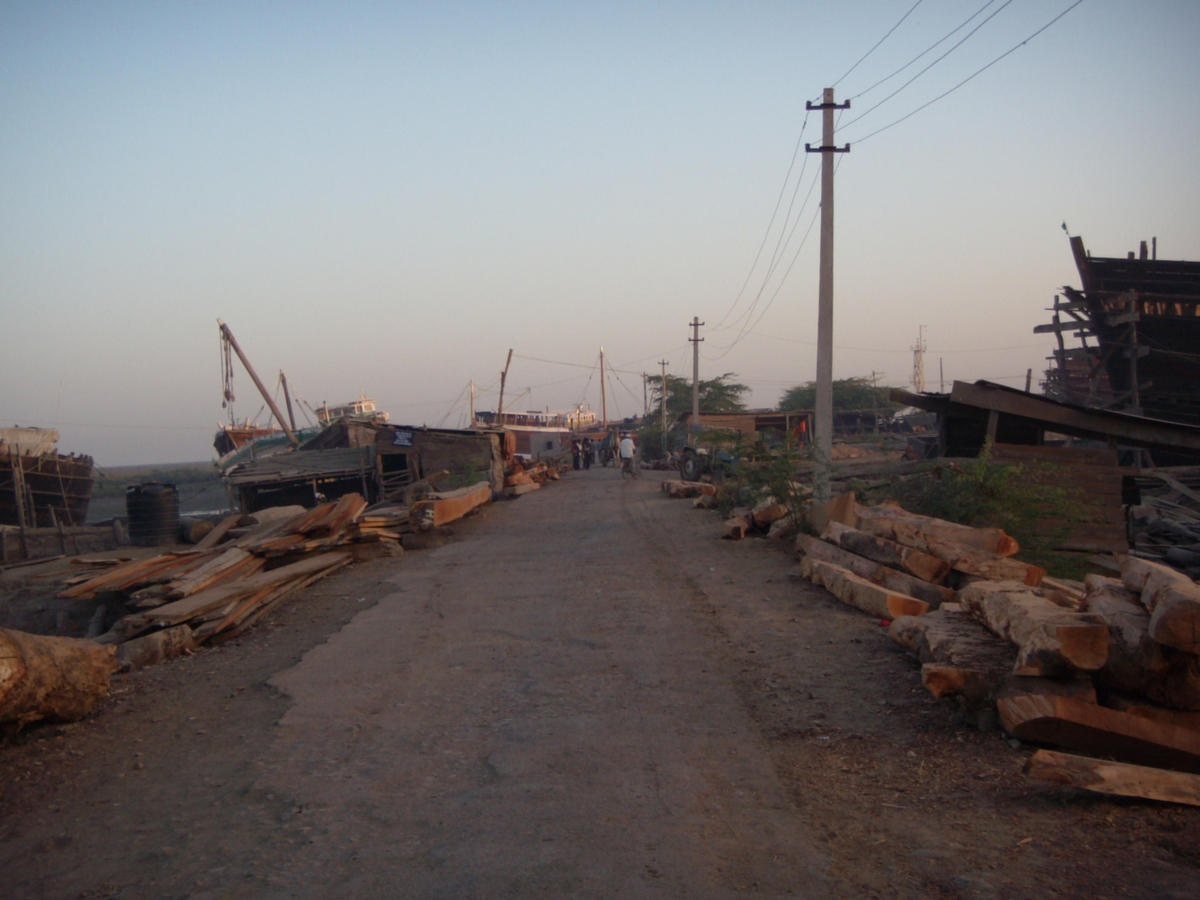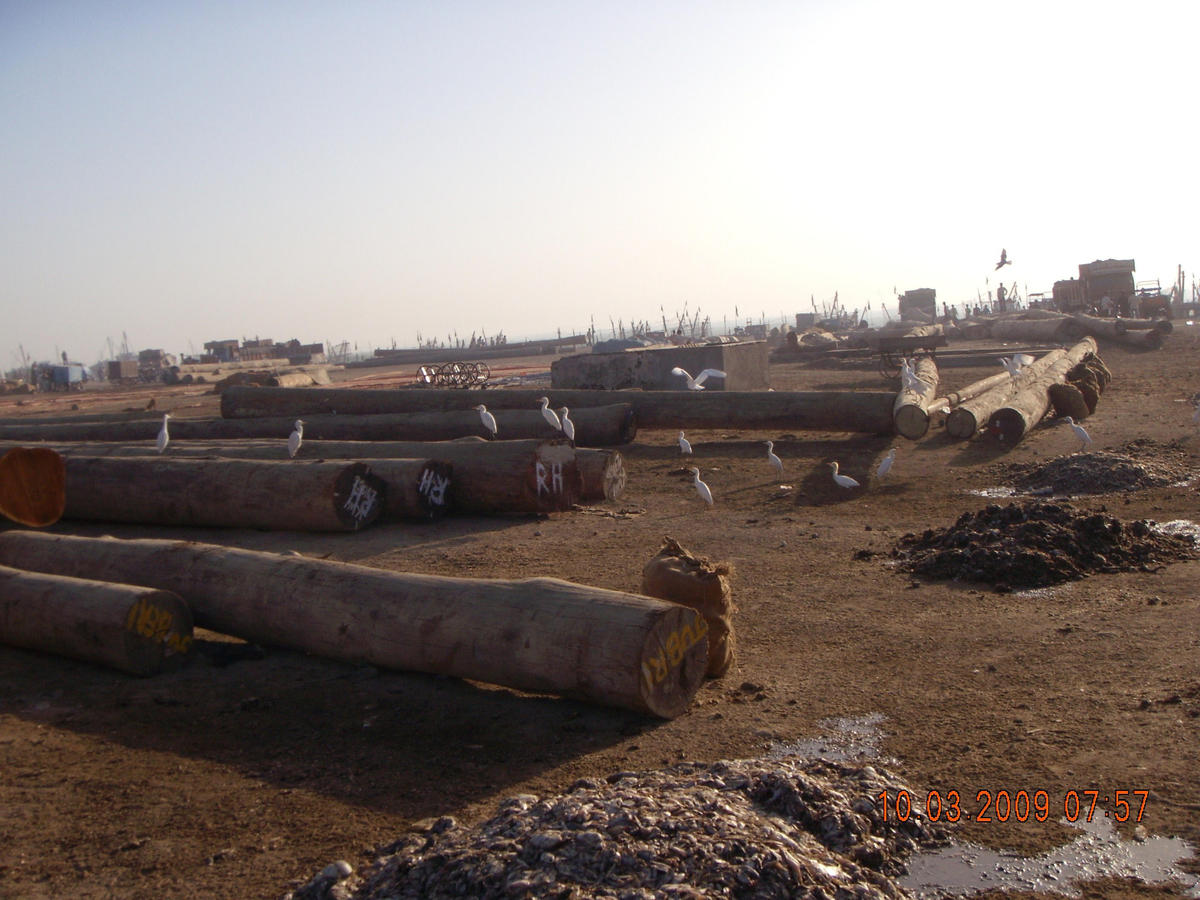
A peculiar thing happened at the 9th Sharjah Biennial. Night after night during the exhibition program, dozens of people gathered near this little emirate’s pastel-colored port to listen to homemade pirate radio broadcasts. Iranian shop owners, traders from Gujarat, and Somali shippers occupied the radio waves, talking about their work, exchanging songs, and communicating with people as far away as Oman or Boosaaso, on Somalia’s northern coast. This port, far more modest than neighboring Dubai’s, and full of ancient-looking wooden boats, serves as a nexus for the exchange of people, goods, and ideas among the Emirates, Iran, India, Somalia, and well beyond — as it has for centuries.
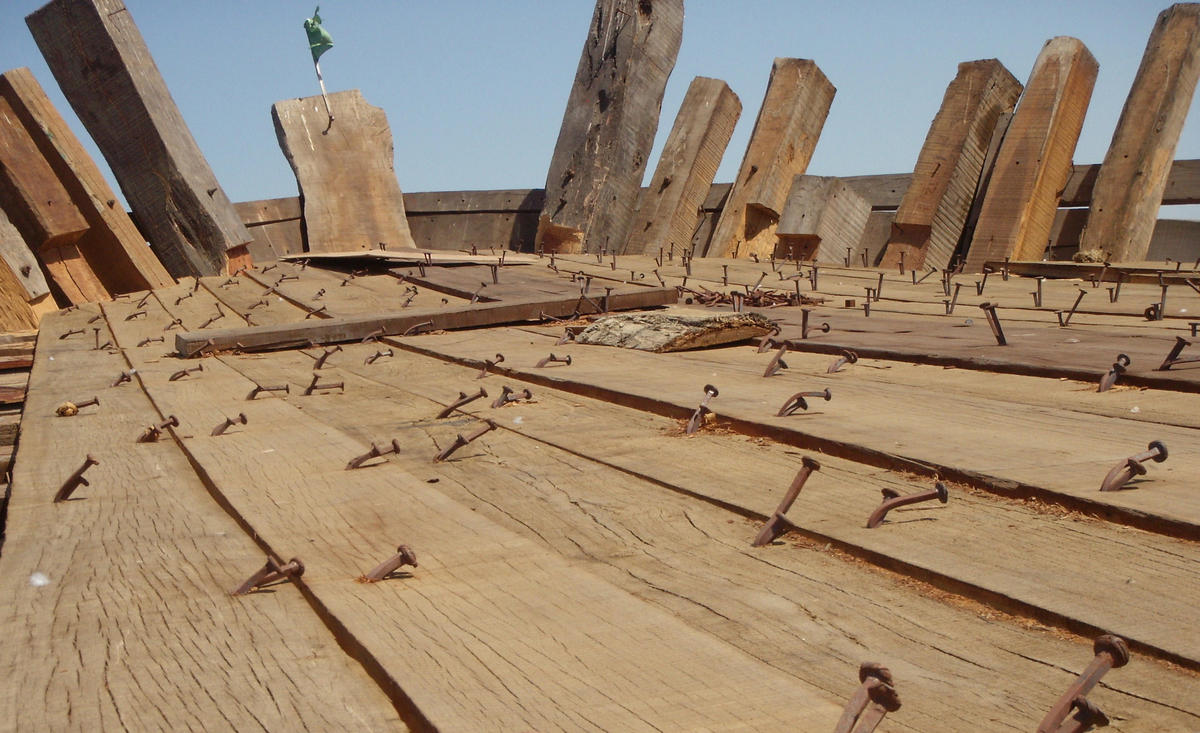
The Wharfage project was the collaborative work of a Mumbai-based workshop — they resist the term “collective” — called CAMP. Born of weeks spent in and around the port talking to persons whose lives and livelihoods depend on these waters, Wharfage not only took the biennial’s top prize, but also served as a compelling entry point into thinking about a biennial’s relationship to its host city. Art historian and Sharjah-native Murtaza Vali spoke recently with CAMP about sea life, piracy, and the promise of radio.
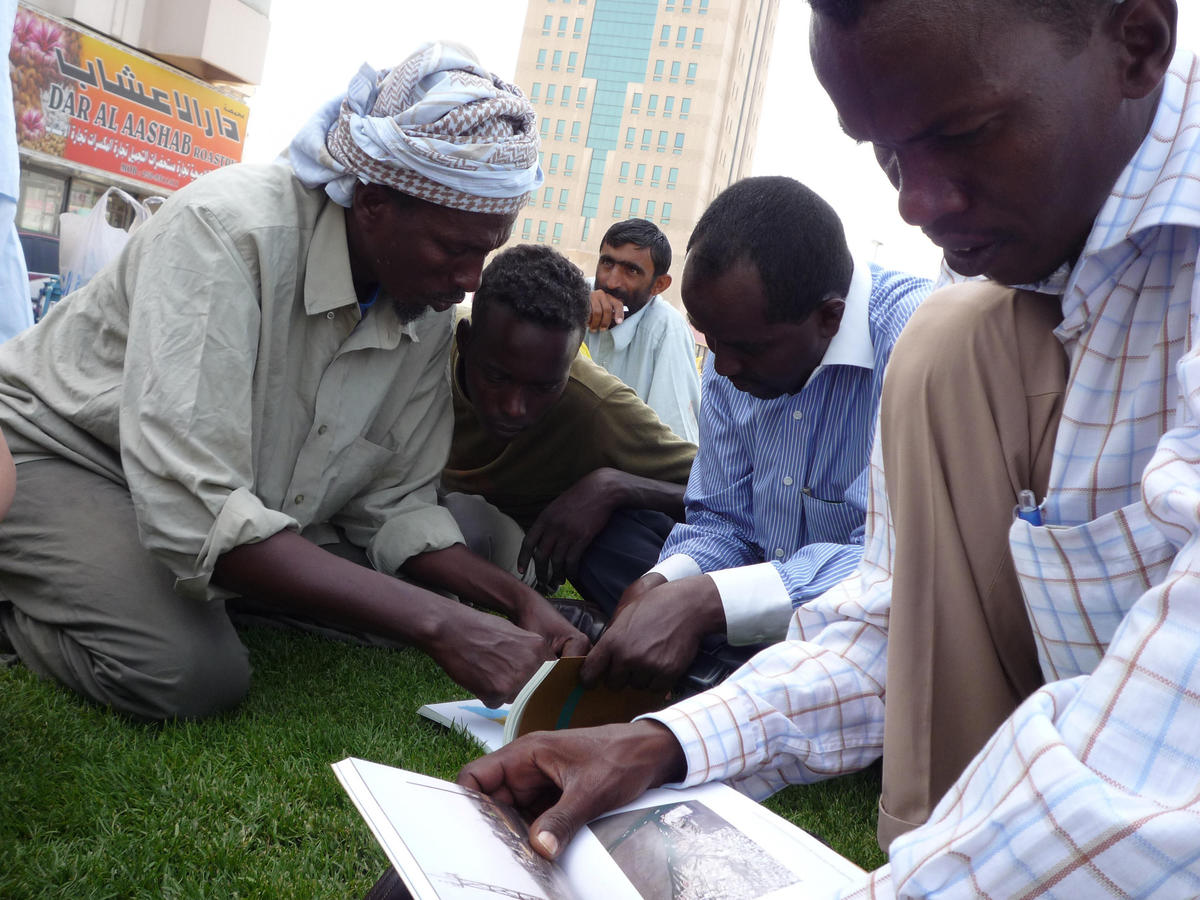
Murtaza Vali: What is CAMP?
Ashok Skukmaran: Shaina Anand and I co-initiated CAMP with Sanjay Bhangar in late 2007. We’d all been working with each other for years, and CAMP was simply an extension of this impulse. It began as a way to have a space in Bombay, where such spaces are rare, and create a bit of structure that would anchor ongoing projects. Nida Ghouse and Hakimuddin Liliyawala have been working with us for awhile, and the two of them spent the most time in Sharjah.
Shaina Anand: We are not an artist’s collective, but a coming together of ideas and intentions. The ability to enter into certain settings and activate transformations, sometimes even temporarily, is important for us.
AS: We resist “collective” because CAMP’s boundaries are not closed — people enter and leave. And there are different modes and scales of engagement possible. If a collective is a sealed entity, it functions too much like a traditional solo artist.
MV: Your mission statement emphasizes an exploratory, research-based approach, one that doesn’t a priori prescribe the limits of art and activism — as captured in your name, an acronym with thousands of possible meanings.
AS: The litany of 100,000 possible “backronyms” for CAMP was a way of emphasizing just this, that the definitions are changing, that the naming of things, especially longer-term initiatives, can presume ability and results. We chose CAMP also because large research institutions with such acronyms — CSCS (Centre for the Study of Culture and Society), CSDS (Centre for the Study of Developing Societies), CSSS (Centre for Studies in Social Sciences) — are common in India.
SA: NGOs in India love acronyms. CAMP has ten different business cards, each for a different set of people. My favorites are “Challenges After Media Practitioners,” which has an image of CCTV cameras sitting on telephone wires like crows on a cityscape, and “Culture According to My People,” which is for sarkari (government) use and has a flaming pink lotus. There is also “Comrades After Missed Promises,” for our exhausted activist colleagues.
MV: How does this open-ended approach work out on a practical, day-to-day basis?
AS: CAMP and the projects are somehow separate — the projects are born from the organization but may grow beyond it. When we started out, we were very interested in exploring the medium of video in its “community media” avatars — as television, as surveillance, as archives. This is not to flatten its range but to think of ways in which these avatars might be brought together, which led to the online video archive project, Pad.ma. Similarly, other projects cross disciplines. We’ve just started working with GBGB Andolan, a housing-rights group in Bombay. There’s also an ongoing project on elite culture, in the city and beyond. Different people are involved, but strategies and resources can be shared.
SA: The first thing we do, especially when working in different locations, is quickly suss out our position in relation to hierarchies of power. We then, to use a computer term, see what forms of “privilege escalation” are possible. The username “artist” can sometimes provide access to state systems or resources or normally inaccessible material. How we distribute that access then becomes the core of the project.
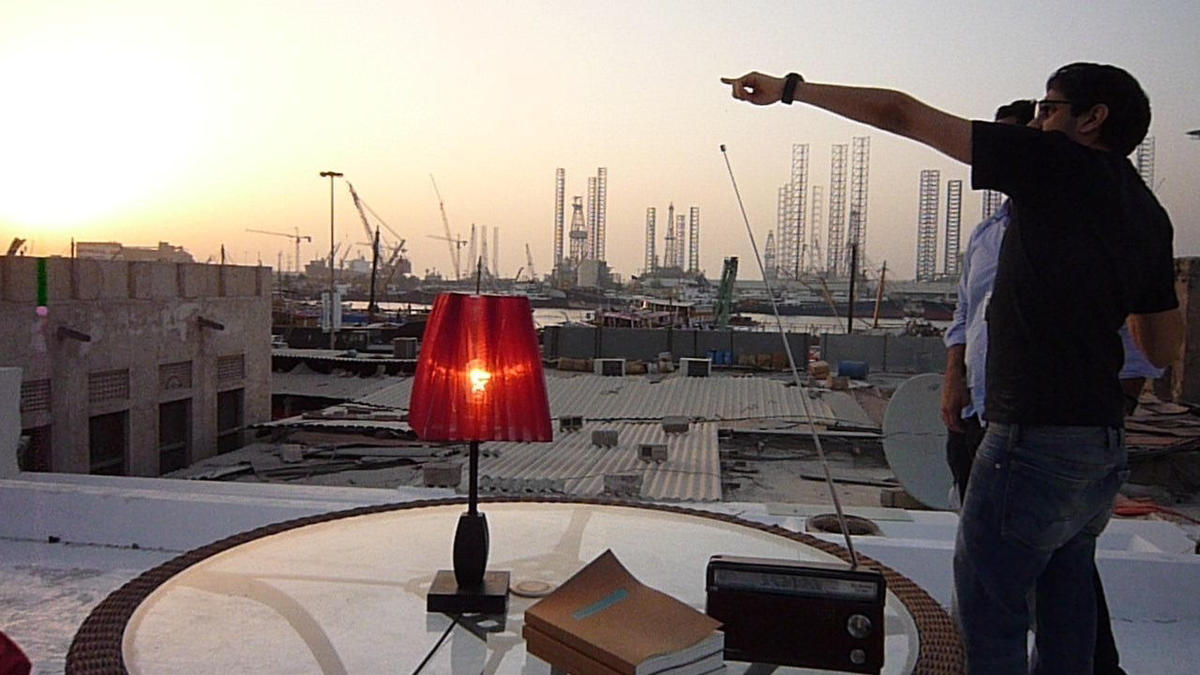
MV: Though the avant-garde has often experimented with alternative distribution mechanisms, distribution is not conventionally considered to be an artistic activity. You, however, identify both production and distribution as activities CAMP might engage in. Is this a specific response to the lack of developed arts infrastructure in India, or a broader concern with the state of art globally, its co-option by capital and transformation into spectacle?
AS: The “distribution of the sensible” is a well-known artistic agenda by now, thanks to Jacques Rancière!
SA: It’s a general concern about the state of art practice, but especially in relation to India. Artists are obsessed with the market and paranoid about their limited editions; filmmakers won’t let you copy their DVDs. Our micro-media practices also make interventions in distribution necessary.
AS: We’re interested in places where the idea of the “open” meets notions of enclosure. This isn’t just a simple binary. In our Jogeshwari water project, films were a way to distribute knowledge about local infrastructure, to allow people deeper access to the stories and the actual mechanisms of municipal water, plumber mafias, groundwater, et cetera. We collaborated with an anthropologist and two local youth groups to produce the films, which were screened and are now available on cheap DVDs. We also want to ensure that this material, quite dense visual and textual material, is stored, and so we created archives, Pad.ma, online, as well as a physical archive in Jogeshwari.
MV: Let’s talk about Wharfage. Could you describe how it all happened?
SA: In late December, on a research trip to Sharjah, we were immediately drawn to the port. Something about horizons — as in, “the horizon” — appeals to us. We could sense “downtime” in the shopping area — workers hanging around, waiting for jobs, the shops across the port nearly empty. Conversations with sailors revealed that almost all of them are from Gujarat, which we did not expect. Then came the next discovery: the sailors were all headed to Somalia. And everyone — from Iranian businessmen to Somali traders to Emirati cops — spoke some Urdu or Hindustani.
AS: And there was the fact that, by contrast with the streets, the port was rather busy.
SA: And then, our position in all of this. How might the biennial framework, with its royal patronage, be used to challenge prevailing ideas about… normalcy, Somali pirates, dangerous waters, war-torn semi-nations —
AS: — and the idea of “business,” this fairly non-romantic dhow trade, cutting through this, perpendicular to it.
MV: Your project made visible the millennia-old nautical ties among South Asia, the Gulf, and East Africa — a history often overlooked or hidden because of current geopolitical hierarchies and race and class politics in the UAE. With its focus on trade, and specifically sea trade, your project recasts the Indian Ocean as a space of contact, not separation, a space that links the lands that surround it.
SA: Our subsequent research, much of it conducted by Nida, revealed that almost no information about this prolific dhow trade with Somalia was available. Stories about pirates predominated.
AS: This provided an opening, a point of engagement.
Nida Ghouse: A common language was integral to the project. The Somali traders — the ones in Sharjah and the ones the Gujarati shippies meet when they land in Boosaaso — speak some Gujarati. The historical linkages you refer to, as they get enacted every day on the port, pointed us toward considering the dynamics of this trade and the kind of story it might tell about engagement with Somalia. We tried to emphasize these ties as historical, yes, but also as something very new.
SA: The dhow as vahaan, or vehicle, is also central. In Salaya, Gujarat, where the dhows are made, they are called vahaanvatti. They are getting bigger and bigger, to accommodate the growing trade between Sharjah and Somalia. In other contexts, vahaan can also refer to radio.
AS: The medium of radio, which relates back to our work in media and networks. Radio is quite a provocative medium. Its unauthorized transmission is banned in most countries.
SA: We love radio. there’s something magical about being able to broadcast from up close, to have access to the control station, to be able to listen and wander in and out of soundscapes.
MV: Let’s return to radio in a moment. I wanted to ask you about the book you produced, a collection of ship manifests, which reveals what Ashok described in the biennial catalog as “the particular materiality of trade,” its peculiar asymmetry.
AS: The manifest is exactly not a balanced sheet. The book is a list or litany, a collection of such unbalanced sheets. The “unbalance” suggests that someone is driving it, holding it up. It has to do with the way language abstracts certain forms of transfer and movement. The list in the book is meant to counter this. It was much harder to assemble than it appears — it was pieced together laboriously from bits of paper, numerous files in Arabic, handwritten logs, manifests, and customs receipts.
SA: This unbalance is not a systemic WTO unbalance. It is not like the World Food Program sending in boats of food — which, because of piracy, they don’t really do now, anyway. Hence all the macaroni, cooking oil, onions, et cetera, on the manifests.
MV: It functions as a reversal of statistical scale, from the macro level of import-export quotas to the micro level of exactly what and how much goes back and forth on a daily basis, ship by ship.
AS: Nida, Hakim, and Shaina had to “extract” this information. This relates to another phenomenon of interest, the objet trouvé. The “found object” is rarely found anymore, as if lying unclaimed on the street — it has to be extracted from regimes of power. In times of excess information, it has to be extracted from apathy or bureaucracy — we have to “care” about it. This entirely changes the nature of working with the found or the readymade. The list does this in a provocatively “objective” way.
SA: Which also relates to the politics of “making visible.” Here, a set of facts becomes productive — and the act of publishing is the intervention.
AS: Of course, it’s technically public information.
MV: How does the public function in a monarchy? Does the public sphere in its traditional democratic sense exist in Sharjah? Did you have trouble getting access to public information?
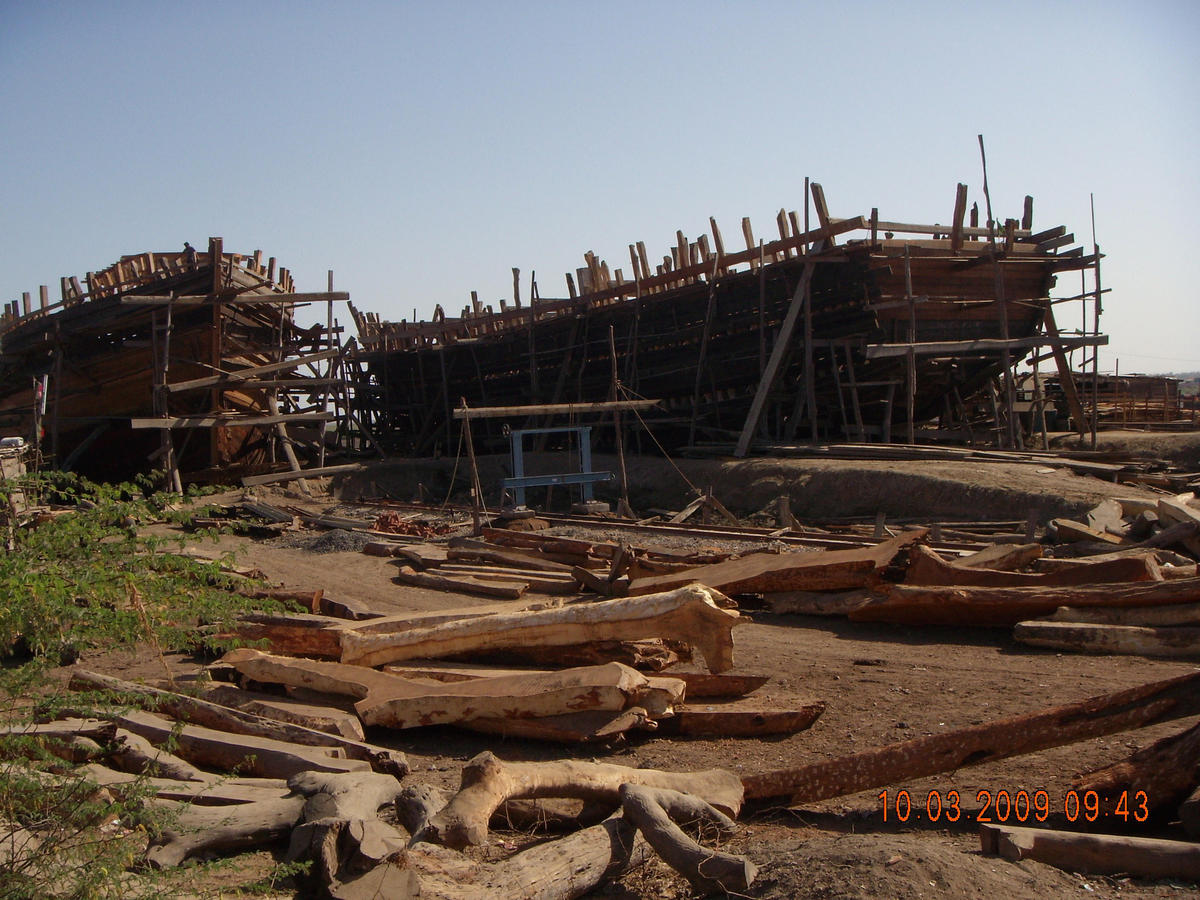
NG: I had just been to Cairo, where the idea of accessing official records for art — or almost any purpose — is almost unimaginable. In Sharjah we had to wait two weeks before gaining entry to the office where the records were kept. Our request probably confused people. Why would we want any, let alone all, of these records? But we came with the sheikh’s patronage, and once we finally entered the office, everyone was very helpful. Though things were in disarray — the record system is not exactly digital yet.
AS: It is public in the sense of being “non-classified.” we didn’t encounter a law that prevented access to them.
MV: Were you surprised by the disparity in materials traded — a wide variety of consumer goods, new and used, to Somalia, and charcoal coming back?
NG: We were expecting livestock from Somalia. Goats in particular.
SA: The absence of livestock was a sad shock.
NG: More and more boats are returning empty from Somalia, so directionality becomes interesting here. The Indian shippies would often say, “Wahan pe kuch bhi nahi hai,” there is nothing there. They carry supermarkets full of stuff on their dhows to Somalia. Although it costs them to return empty, Somalia is still the region with the greatest demand for general dhow cargo trade.
MV: A key part of this project, and of your practice in general, is revealing hidden asymmetries. In the essay in the book you state, “Symmetry occludes our sense of beginnings and ends, lacks and excesses, overflows and residue, desire and drive.” In a sense, a harmonious bottom line occludes disparities, which brings me back to the radio broadcasts. Were they smooth sailing, so to speak, or did they reveal or create tensions as well? Jean-Luc Nancy speaks of an always fraught “being together” and a celebratory “being of togetherness.” The couple of times I stopped by, it looked like a party.
AS: There are parties, and then there are party politics. There were disagreements regarding who would have more airtime, why this and not that should get broadcasted. Questions were raised about whether it was right to just talk about the boats and to discuss Somalia from afar. The radio does give rise to certain anxieties of “broadcast” in a way distinct from the book.
MV: How so?
AS: Radio is ephemeral and live, but also spoken, nonliterate. It creates a space that is perceptible in other ways. You could hear the broadcast, walking around the back lanes of the market. Someone called in from Abu Dhabi saying they could hear it. The anxiety and thrill of radio is that you never know who is listening in at any given moment. People would walk over from nearby apartment buildings and from shops deep in the market. So yes, there were certain kinds of friction, but that wasn’t the major story.
SA: Because of some sort of audit the port authority was doing on the crew, certain sailors were confined to their ships for those four days of our broadcasts. The khallasi, the lowest rung, were not allowed to cross the road or move in the city. The radio became a celebration of voice, of song, and the creation of a listening space. We started with songs in Gujarati and Kucchi, but then the Sindhi loaders from Dera Ghazi Khan showed up, then Somalis, Pathans, Iranians, Egyptians, and the Punjabis from the buildings across from the port, and so on.
AS: There was also a distance we chose to maintain, with regards to the biennial audience, to avoid a different kind of friction. We set up a listening station on the roof of a heritage building adjacent to the art museum, to discourage them from coming to the port. Originally we thought there should be a sight line between the roof and the station/boat, so you could see it in the distance, on the horizon, if you like. But then we decided that wasn’t important and, in fact, it was good that the biennial audience had to search it out. Many biennial people didn’t have the time to look for us, but they saw the book and heard bits of the broadcast on the roof.
MV: It was literally outside the biennial. You could have set up a listening station in the museum itself, in the cafe, for example.
AS: Yes, it was “next to” the biennial, but also next to the port. At the same time, the museum guards were tuned in all the time on their cellphones. In the end it was largely about people, Somali traders, shippies, Iranian shop owners, sharing. Half the airtime was left open for people to bring in and broadcast songs…
SA: … which they would Bluetooth from their phones to ours or to the computer. Programming grew, people made farmaishes, or requests. Or demands.
AS: In the end, there was some great music, singing, poetry even, and a lot of terrible music, too. People would stop by and talk about the previous night’s broadcast. Someone would express sadness over not having a certain song they wanted to hear, someone else would find it. We even replayed songs that were part of I LOVE to YOU: Workers’ Voices in the UAE, e-xplo and Ayreen Anastas’ project from the last biennial. Hakimuddin gave a long talk on what he had been doing on the port for six weeks. I did live interviews in the shops across the road with Iranians who participate in the dhow trade with Iran, which involves smaller boats. Together, the book and radio broadcast worked as a strange couple, describing a series of oppositional binaries — record/live, written/oral, goods/people. About a port/on a port.
SA: March 21 was Norooz, so the Iranian shop owners came over and participated and requested lots of Farsi songs to celebrate the new year. The captain of Nazre Karam, the boat where we had the station set up, tuned in to single-sideband (SSB) radios in Salaya and Mandvi in Gujarat and spoke to boats in Oman. Nida had call-ins from Boosaaso, where the boat Sabir Priya was docked.
NG: I had spent some time on that boat, and they had helped me a lot during my research. It would have been great if they had been in Sharjah, but then that’s what it’s like when you’re on a ship, I guess.
SA: The always leaving.
MV: Was the title, Wharfage, just a description of the site, or was there more to it?
AS: The word “wharfage” refers to both the actual site of the docks — the Sharjah Creek Wharfage — and the fee charged for docking.
NG: It has a deeper relevance and reveals particularities about these trade patterns. The ships operate out of Sharjah because it has really low docking fees. The first six days are free, after which it’s 20 AED per day.
MV: You’re currently in London working on a project about Edgware Road, a neighborhood populated with immigrants, predominantly Middle Eastern, but also Asian and African. Did you pick it after your experiences with Wharfage?
SA: We didn’t pick it, but honestly, our diet hasn’t changed for six weeks — great Middle Eastern food and so-so Indian food. The Serpentine Gallery has just initiated an eighteen-month public program called the Edgeware Road Project. We and Ultra-red are the first artists in residence. The rumor is that this will tie into the Serpentine’s upcoming exhibition on the Middle East.
MV: What are you planning?
SA: The problem of itinerant, socially engaged art is something we had to address head-on in this case. So: www.edgwareroad.org.
AS: We’re setting up a local “infrastructure,” a process for publishing material, online and off.
SA: The structure includes ideas for editorial committees, meeting together to publish “documents,” and these texts coming back onto the street in the form of place mats and veritable photo-roman strips.
MV: Now that you mention it, how did you address these problems in Wharfage?
AS: There isn’t a really good answer to how much time produces change or provokes thought. We’re still thinking about it, engaging with different timescales, ways of working, alliances, and neighborhoods. If you think of it spatially, these projects are in a “neighborhood” as well, not the same but not entirely separate — not just “one place after another,” to quote Miwon Kwon. We’re trying to bring them into some structures of thinking, of working.
SA: Being from the outside can be liberating. Documentary filmmakers have exploited this “confidant” thing with impunity. But for us, distribution is vital. The agency offered, received, and distributed in the process is key. As is the distribution of privileges accorded to the “art project” or “artist” in the first place.
